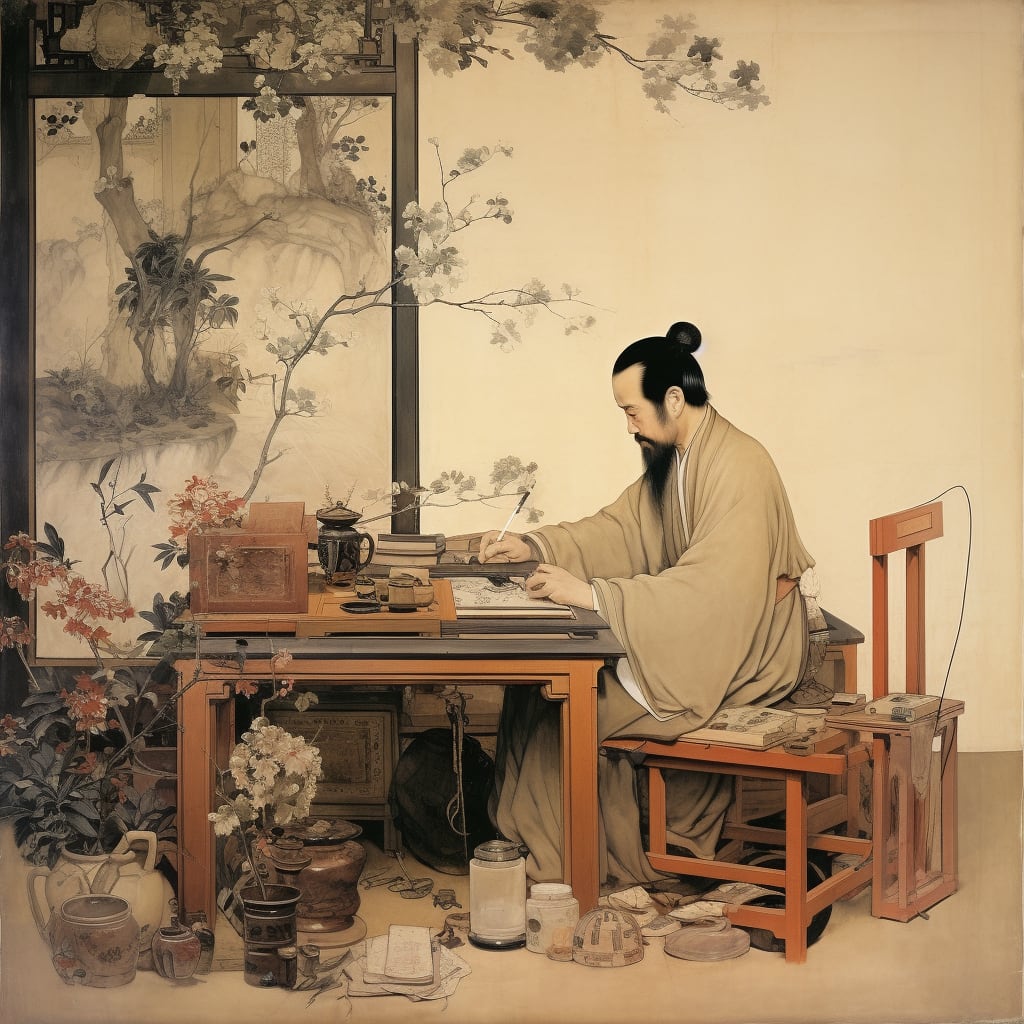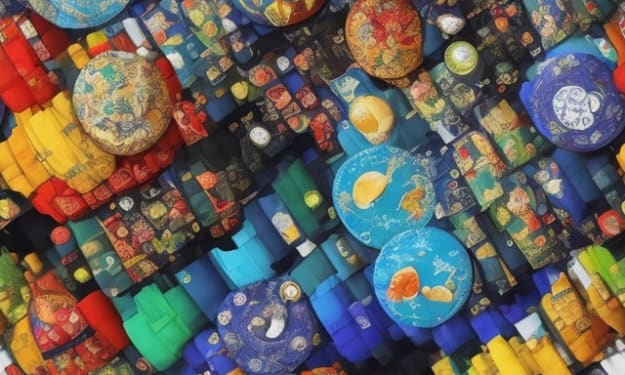Life as a Ming Dynasty Painter: A Journey into Ancient Chinese Art
Exploring Artistic Pursuits and Cultural Riches in China's Golden Age

In the quiet hours of dawn, as the city of Chang'an, the capital of the Han Dynasty, was still enveloped in the soft mist, my day would begin. As a Confucian scholar, my life would be governed by a strict regimen of discipline and self-cultivation. The first rays of the sun would find me in the midst of meditation, a practice that would help me cultivate inner peace and clarity of thought.
After meditation, I would devote my morning to the study of the "Five Classics" - the Book of Changes, the Book of Documents, the Book of Odes, the Book of Rites, and the Spring and Autumn Annals. These texts, considered the cornerstone of Confucian thought, would guide my understanding of the world and my role within it. I would spend hours pouring over these ancient texts, interpreting their wisdom, and seeking to apply their teachings to contemporary issues of governance and morality.
Teaching would be a significant part of my duties as a Confucian scholar. In the afternoons, I would hold lectures for students and officials, imparting the wisdom of Confucian teachings. These sessions would not only be about imparting knowledge but also about fostering critical thinking and moral discernment among my students.
Beyond the confines of the classroom, I would serve as an advisor to the emperor and his court. My deep understanding of Confucian principles would be invaluable in guiding policy decisions and resolving diplomatic disputes. In this role, I would have the opportunity to shape the course of the empire, ensuring that governance was carried out in accordance with the principles of righteousness and benevolence.
Yet, being a Confucian scholar would not be all What if I could be born in another era? What profession would I choose for myself? As a lover of art and culture, I would like to be a painter during the Ming Dynasty (1368-1644) in China. This was a golden age of Chinese civilization, when art, literature, philosophy, and science reached new heights of excellence and influence.
The Ming Dynasty was founded by Zhu Yuanzhang, a peasant rebel leader who overthrew the Mongol Yuan Dynasty and restored Han Chinese rule. He established a strong and centralized government, which promoted social stability, economic prosperity, and cultural flourishing. He also expanded China’s territory and trade, sending naval expeditions to Southeast Asia, India, Africa, and the Middle East.
As a Ming Dynasty painter, I would enjoy the benefits of living in a rich and powerful country. I would have access to the finest materials and tools, such as silk, paper, ink, brushes, pigments, and gold. I would also have access to the vast collections of artworks and books in the imperial palace or the libraries of wealthy patrons. I would be able to learn from the ancient masters and contemporary scholars, as well as from foreign influences and styles.
My painting style would be influenced by the literati tradition, which emphasized personal expression, poetic sentiment, and spiritual cultivation. I would use ink and brush on paper or silk, creating landscapes, flowers, birds, and figures with elegant and expressive strokes. I would also inscribe my paintings with poems or calligraphy, adding another layer of meaning and aesthetic appeal.
One of my favorite subjects would be landscapes, which were considered the highest form of painting in Ming China. Landscapes were not only representations of nature but also reflections of the painter’s mind and spirit. They were also metaphors for political and moral ideals. For example, a painting of a towering mountain could symbolize the strength and integrity of a ruler or a scholar.
Another subject that I would enjoy painting would be flowers and birds, which were also popular among Ming painters. Flowers and birds were not only beautiful but also meaningful. They were associated with different seasons, emotions, virtues, and messages. For example, a painting of plum blossoms could signify resilience in the face of adversity or loyalty to one’s principles.
As a Ming Dynasty painter, I would not only paint for myself but also for others. I would receive commissions from the emperor, nobles, officials, merchants, or friends. I would also exchange paintings with other painters or give them as gifts. Painting was not only a way of expressing myself but also a way of communicating with others.
Being a painter in Ming China was not only about artistic pursuits. It was also about following a moral code and striving to be a “junzi” or “gentleman”. This meant cultivating virtues such as benevolence,
righteousness, propriety, wisdom, and faithfulness. As a painter, I would strive to embody these virtues in my daily life, serving as a role model for others.
My days would be filled with the joy of creation, the pursuit of beauty, and the contemplation of nature and life. I would spend hours in my studio, immersed in the world of my paintings. I would also spend time in nature, observing and sketching the landscapes, flowers, and birds that would later appear in my works.
Beyond the confines of my studio, I would also participate in the social and cultural life of the Ming court. I would attend banquets, poetry gatherings, and art exhibitions, where I would have the opportunity to meet and interact with other artists, scholars, and patrons. These events would not only provide intellectual stimulation but also opportunities for networking and collaboration.
However, life as a painter in Ming China would not be without challenges. The art world was highly competitive, and gaining recognition and patronage was not easy. Moreover, the high moral standards that painters were expected to uphold could also be a source of pressure.
Despite these challenges, I believe that being a painter in the Ming Dynasty would be a fulfilling and rewarding occupation. It would allow me to express my creativity, contribute to the cultural richness of the Ming era, and leave a lasting legacy for future generations.
In conclusion, if I had the chance to be born in another era, I would choose to be a painter during the Ming Dynasty in China. This imagined occupation not only provides a fascinating glimpse into a past era but also offers timeless insights into the power of art and the human spirit. Whether in the Ming Dynasty or in the present day, the pursuit of beauty, truth, and virtue remains a noble and worthwhile endeavor.
About the Creator
Huatin OU
Originally from Western China,live in Saskatoon as a freelance writer. vibrant energy of this city fuels creativity, lending a unique flair to work. a fusion of Eastern roots and Western experiences, captures the magic find in everyday life
Enjoyed the story? Support the Creator.
Subscribe for free to receive all their stories in your feed. You could also pledge your support or give them a one-off tip, letting them know you appreciate their work.






Comments
There are no comments for this story
Be the first to respond and start the conversation.